Common centaury (Centaurium erythraea) is a biennial herbaceous plant from the Gentianaceae family of flowering plants. It is a relative of other famous herbs, among which is Gentiana.
Common centaury is also known as the European centaury. Centaurium erythraea is distinguished by a soft and straight, smooth stem, which branches off in its upper part, reaching up to 11 3/4″ (30 cm) tall. The basal leaves of common centaury are egg-shaped, on average about 1/2″ (1 cm) long.
The stem leaves are arranged oppositely and are a little longer than the basal ones. The flowers of Centaurium erythraea are tiny, about 1/2″ (1 cm) long, pink colored. There are 5 stamens.
Common centaury blooms from June to September. It can be seen in grassy areas, around shrubs and by the side of the road outside of populated areas. It grows best at altitudes between 0 and 4920 ft (1500 m) above sea level. It's widespread in Europe, Asia and northern Africa.
Composition of Common Centaury
Common centaury is a source of bitter substances. Scientists have found gentiopicroside, alkaloids and erithrocentaurin in its composition. It also contains oleic acid, flavonoid substances, ascorbic acid and other valuable substances.
Collection and Storage of Common Centaury
The above ground part of the plant is used for medicinal purposes. The stems are collected during the herb's bloom. Collection of common centaury is done only in dry weather, otherwise there's a chance for the herb to become moist and for its quality to seriously deteriorate.
The blooming stems need to be cut off 6″ (15 cm) from the top with a sharp knife. Then arrange the stems all facing in one direction, being careful not to squeeze them. Next, clean the material of impurities, as well as from overripe and damaged plants, and arrange in ventilated and shady areas where they can dry.
Some herbalists prefer to make a cluster of 10 stems and hang them that way to dry somewhere. The dried clusters can also be stored hanging on a wire or nails, although several of these should not be arrange too close to each other.
Benefits of Common Centaury
Common centaury is highly valued for its solid effects on various diseases. The herb is most popular for the fact that it stimulates appetite, aids digestive processes and improves secretion of gastric juices and bile.
Plus it lowers high temperature and helps for quicker release of gasses. Research shows that the same plant can be used as an anthelmintic.
Doctors and folk healers are adamant that common centaury can be used for constipation, gasses, inflamed stomach, inflamed liver, anemia, diabetes, intestinal parasites, hepatitis, kidney stones, poor eyesight, hair loss.
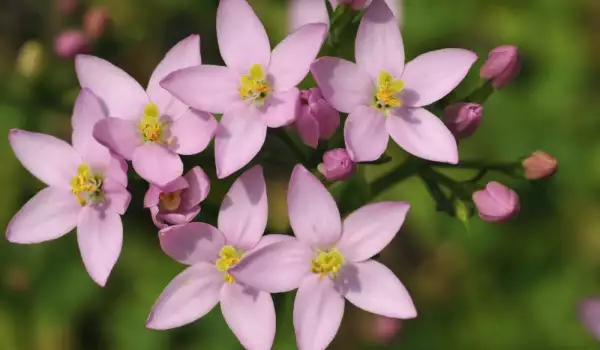
Centaurium erythraea was also prescribed for psoriasis, uterine bleeding, leucorrhoea, dropsy, headache. Topically it's applied to slow healing wounds, eczema, hemorrhoids and more.
But that's not all. Common centaury is an herb highly prized in homeopathy. Extracts from the herb are recommended for people who are too quiet, mellow and irresolute, who find it difficult to make decisions and feel weak, helpless and dependent on others.
According to experts, this herb is capable of restoring lost self-confidence and tone, of providing confidence and returning the balance when communicating with others.
Folk Medicine with Common Centaury
Folk healers use the herb for a myriad of ailments, processing it depending on the ailment itself. For example, during anemia and after a severe illness, a concoction of common centaury is given to strengthen the body.
To make it, pour 4/5 cup (200 ml) of boiling water over 1 tsp of the dried herb. After it cools, filter the resulting mixture and divide it into 3 equal parts. Drink each half an hour before meals.
If you're suffering from lack of appetite or have worsened eyesight, you can make an infusion from the herb and mix it with red wine; the ratio needs to be 1:10. Take 1 tbsp of the mixture 3 times a day after meals.
Centaurium erythraea can also be used to make something like a wine extract. Soak 1/5 cup (60 g) of the herb in 4 1/5 cups (1 L) of red wine. Leave the mixture in a dark and cool area for 8 days. Then filter the wine and store it in a cool place once more. Drink 1 wine glass of it half an hour before meals.
Common centaury is also used for treating topical wounds since it helps them heal faster. For skin problems, folk healers recommend mixing dried and crumbled parts of the plant with a little olive oil and applying it to the affected area.
You can use this same mixture for hair loss, it's best to leave the pomade for at least an hour on your hair. You can put a bathing cap on and wrap that with a towel.

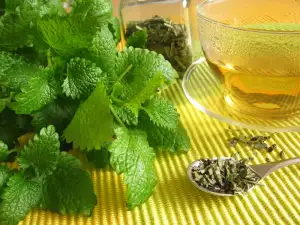
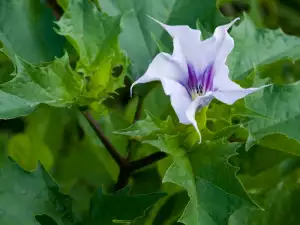
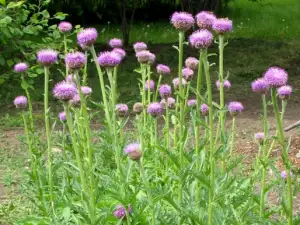
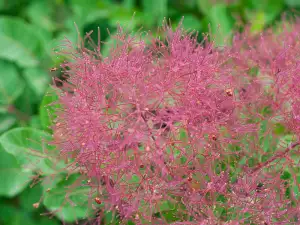




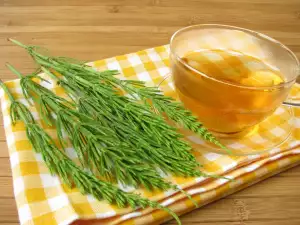
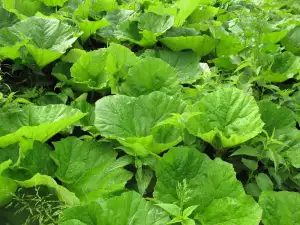



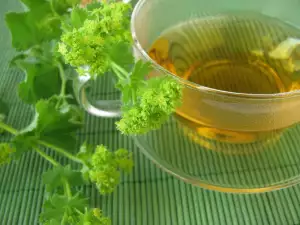


Comments